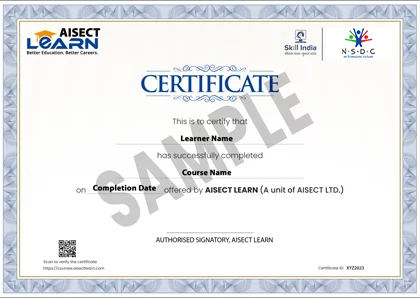PG Diploma in ANSYS
Self-Paced
Fee: ₹6,499
 Dr. Anil Kumar Rao | Assistant Professor
Dr. Anil Kumar Rao | Assistant Professor
ANSYS Workbench is a software tool for solving numerical engineering problems. For engineers, it is used for simulating interactions between structural, vibration, fluid dynamics, heat transfer, and electromagnetic disciplines. Mechanical analysis is covered using ANSYS Workbench in this course. Learners will be able to relate to real-life engineering problems through this course. Capable of understanding and solving the problem definition. An overview of ANSYS Workbench’s interface for mechanical design is covered in this course.
Objectives
What Will You Learn
Skills you will gain
Curriculum
-
Paper 1 - Introduction of ANSYS
-
Chapter 1 - Introduction of GUI
-
Chapter 2 - ANSYS Workbench Overview
-
Chapter 3 - Basic Fundamental of FEM
-
Chapter 4 - Basic Fundamentals of FEA
-
Chapter 5 - Mechanical Interface
-
Chapter 6 - Types of Analysis using ANSYS
-
-
Paper 2 - Design Modeler
-
Chapter 1 - Introductory of Design Modeler
-
Chapter 2 - Sketches
-
Chapter 3 - Lines and Surfaces
-
Chapter 4 - 2D & 3D Modelling
-
Chapter 5 - Geometry Simplification and Repair
-
-
Paper 3 - Basic Mechanical Engineering
-
Chapter 1 - ANSYS Mechanical Overview
-
Chapter 2 - Basic Analysis Procedure
-
Chapter 3 - Toolbars and Graphics Control and Selection
-
Chapter 4 - Engineering Data Manager
-
Chapter 5 - Loads and Supports
-
-
Paper 4 - General Preprocessing
-
Chapter 1 - Geometry Branch
-
Chapter 2 - Materials and Named Selections
-
Chapter 3 - Coordinate Systems
-
Chapter 4 - Cell Zone Conditions
-
Chapter 5 - Boundary Conditions
-
Chapter 6 - Element Selection Information
-
-
Paper 5 - General Preprocessing
-
Chapter 1 - Introduction to ANSYS Meshing
-
Chapter 2 - Global Meshing Controls
-
Chapter 3 - Local Meshing Controls
-
Chapter 4 - Meshing Troubleshooting
-
Chapter 5 - Mesh Quality
-
Chapter 6 - Virtual Topology
-
Chapter 7 - Workshops
-
-
Paper 6 - Structural Analysis
-
Chapter 1 - Static Structural Analysis
-
Chapter 2 - Linear Static Structural Analysis
-
Chapter 3 - Nonlinear Static Structural Analysis
-
Chapter 4 - Stress Concentration Analysis
-
Chapter 5 - Solving Models
-
-
Paper 7 - Modal Analysis
-
Chapter 1 - Free Vibration Analysis
-
Chapter 2 - Prestress Vibration Analysis
-
Chapter 3 - Harmonic Structural Analysis
-
Chapter 4 - Solution Setup
-
Chapter 5 - Modal Results
-
-
Paper 8 - Thermal Analysis
-
Chapter 1 - Basic of Steady State Heat Transfer
-
Chapter 2 - Thermal Boundary Conditions
-
Chapter 3 - Steady State Thermal Analysis
-
Chapter 4 - Transient State Thermal Analysis
-
Chapter 5 - Thermal Stress Analysis
-
-
Paper 9 - Results and Postprocessing
-
Chapter 1 - Viewing Results
-
Chapter 2 - Contour Controls
-
Chapter 3 - Postprocessing Utilities and Scoping Results
-
Chapter 4 - Exporting Results and Coordinates Systems
-
Chapter 5 - Convergence and Scoping
-
Instructor

Dr. Anil Kumar Rao
Assistant ProfessorDr. Anil Kumar Rao has 10 year of experience working with ANSYS and currently serves as an Assistant Professor at Rabindranath Tagore University in Bhopal, Madhya Pradesh.
Still have queries? Talk to our counselors who are available to guide you.
Shareable Certificate

Other Details
PG Diploma in ANSYS
 Credentials
Credentials Associated Courses
 Instructor:
Instructor:
 Duration:
Duration:
 Course Credit:
Course Credit:
 Certification Body:
Certification Body:
 Language:
Language:
 Access:
Access:
 Shareable Certificate:
Shareable Certificate:
